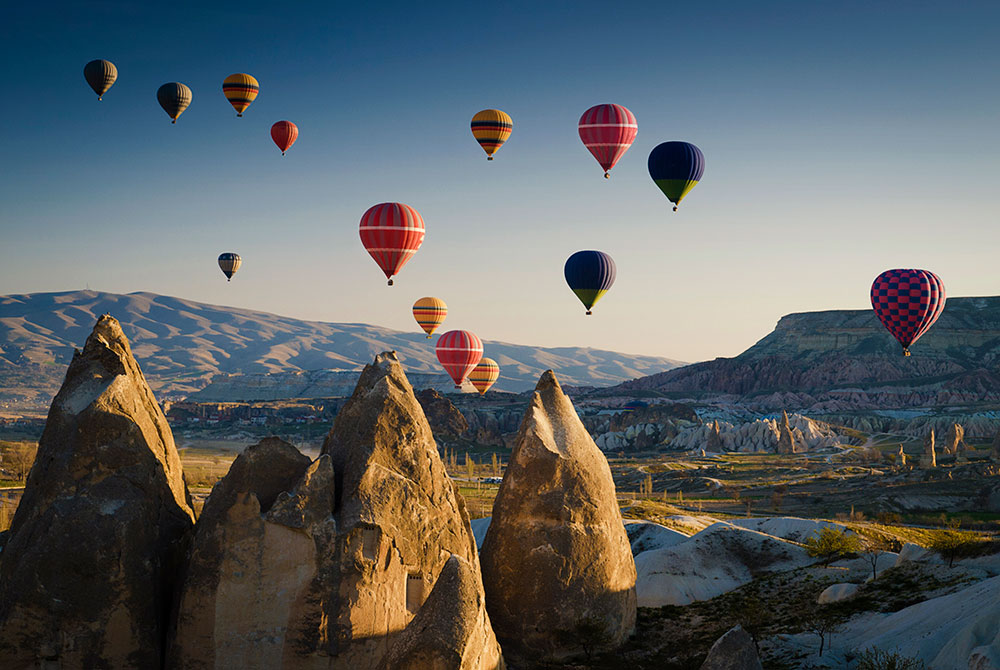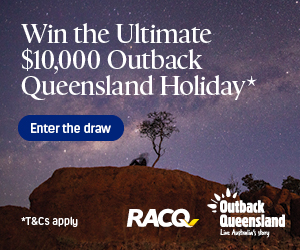A taste of Turkey: Sweet delights and timeless wonders

I have never seen as much Turkish Delight as I did in Istanbul.
Shop after shop, row after row, there’s a kaleidoscope of the sweet treat. And, as a Turkish Delight lover, I am there for it.
With a population of more than 16 million people, Istanbul is the most populous city in Turkey, and Europe.
The city straddles Europe and Asia with the Bosphorus Strait being the boundary.
Some two million people cross between Asia and Europe every day via ferry or car or a two-minute subway ride.
Minarets (the tall towers of a mosque from where the calls to prayer come) dot the Istanbul skyline and all seem to be blue.
Never having before been to Turkey, I must confess that I expected much more of a developing world vibe.
What I found in Istanbul was a bustling, modern city where soaring skyscrapers sit alongside ancient buildings.

The Sultan Ahmed Mosque, known as the Blue Mosque.
The Sultan Ahmed Mosque, built in the 17th century, holds about 10,000 worshippers. It is free to enter and wondrous to see.
Known for having six minarets (rather than the standard four) and for its many domes and semi-domes, the building became known as the Blue Mosque for the blue colour of its interior.
When the nearby Hagia Sofia was completed in 537, it was the largest church in the world for hundreds of years.
It has variously been a church, a mosque, a museum and, since 2020, a mosque again.
People who want to pray are allowed into the lower floor of Hagia Sofia for free, but tourists pay to access the first floor; It was definitely worth paying.

The Basilica Cisterns in Istanbul.
For mine, the surprise packet of the attractions I visited in Istanbul was the Basilica Cisterns; they were absolutely mind-blowingly beautiful.
No longer operational, the Cisterns now exist only for tourists and for film sets – you may recognise them from the 2016 movie Inferno, starring Tom Hanks.
When the Cisterns were part of the city’s water source, fish were kept there. If the fish lived, that was evidence that no enemy had poisoned the water.
Nowadays, there are modern art installations and an ever-changing light show reflecting off the water.
Dicover the latest Turkey holiday offers with RACQ Travel
I had long wanted to visit Gallipoli, so we did a long day trip there.
I walked through some eroded trenches and through some of the rows and rows of headstones.
A common and terribly poignant epitaph on many gravestones read: “Their glory shall not be blotted out.”
I ached for the loss of the young Australians and Turks, and for their families.

The Australian War Memorial at Gallipoli.
From Istanbul, I took a short flight to Cappadocia to fly in a hot air balloon – something that I had never done.
The hot air balloon experience was beyond amazing – so smooth and serene.
I was in awe of the skill of the pilots, controlling the balloon so that the basket seemed to brush the tops of the ‘fairy chimneys’.
The next morning, I woke to a whooshing sound that was the propane gas being fired into the balloons. I had a front-row seat as the colourful balloons glided overhead.
I stayed in Göreme which is a tourist town layered with hotels, restaurants and shops. All are adorned with fairy lights, so it is very pretty at night.
A tip for the unwary though – the streets in Göreme are steep.
There are lots of tourist activities on offer, including hot air ballooning, camel rides, ATV rides, horse rides and cultural tours.
I chose to do two day-long guided tours, concentrating on an underground city, fairy chimneys and cave houses.
The underground cities were hiding places thousands of years ago in times of religious persecution.

The 'fairy chimney' formations at Kaymakli.
I went to Kaymakli, which used to accommodate 3,000 people. Some underground cities housed 20,000 people.
The fairy chimneys were like nothing I had ever seen.
Created by volcanic ash, they form in all different shapes, and all have mushroom-shaped tops. People lived in them for 2,000 years but now they are for viewing only.
Cappadocia is known for its cave houses. People are no longer allowed to live in cave houses, but you can tour inside them for a fascinating slice of a former way of life.
There is a whole lot more to see in Istanbul than what I had the time to do, plus many other parts of Turkey yet to visit.
What I saw was exotic, colourful, vibrant, incredibly sad (Gallipoli) and captivating.
Now, I’ve made myself hungry. Where is that last box of Turkish Delight?
Know before you go
Do Australians need a visa for Turkey?
Yes, Australian citizens need a visa to visit Turkey. You can apply for an e-visa online.
Is it safe to travel to Turkey?
I never felt unsafe. However, at the time of writing, the Smart Traveller advice was to “Exercise a high degree of caution overall.” It is best to check before travelling.
When is the best time of year to visit?
Summer (June to August, when I went) is very hot. Unless you want a beach holiday, the best time is probably during the spring months, from March to May.
Is Turkey an expensive holiday destination?
I found restaurants, taxis and tourist attractions in Istanbul were similar to Australian prices. Public transport is dirt cheap though. Cappadocia prices were more reasonable.
Related topics
Things to note
The information in this article has been prepared for general information purposes only and is not intended as legal advice or specific advice to any particular person. Any advice contained in the document is general advice, not intended as legal advice or professional advice and does not take into account any person’s particular circumstances. Before acting on anything based on this advice you should consider its appropriateness to you, having regard to your objectives and needs.
Insurance Products (excluding Travel Insurance) are issued by RACQ Insurance Limited ABN 50 009 704 152 (RACQI) and arranged by its agent, RACQ Distribution Services Pty Ltd (RDS) ABN 35 116 361 650, AFSL 567130 and RDS' authorised representatives (including RACQ Operations Pty Ltd ABN 80 009 663 414, AR No. 234978 (RACQO). Conditions, limits and exclusions apply. RDS and RACQO are in the RACQ group of companies. One of the companies in the RACQ group of companies has a minority shareholding in RACQI.
RDS and RACQO have not taken your personal objectives, circumstances or needs into account when preparing advice regarding insurance products and you will need to consider whether the advice is appropriate for you. Read the Product Disclosure Statement (PDS) and any applicable Supplementary PDS before making a purchase decision on this product. You can also access our Target Market Determinations on this website. RDS receives a commission from RACQI for the policies it arranges. RACQO receives fees paid for services it provides to RDS. Further details about remuneration are available on request prior to purchasing.
Banking and loan products issued by Members Banking Group Limited ABN 83 087 651 054 AFSL/Australian credit licence 241195 trading as RACQ Bank. Terms, conditions, fees, charges and lending policies apply. This is general advice only and may not be right for you. This information does not take your personal objectives, circumstances or needs into account. Read the disclosure documents for your selected product or service, including the Financial Services Guide and the Terms and Conditions, and consider if appropriate for you before deciding.
Except for RACQ Bank, any RACQ entity referred to on this page is not an authorised deposit-taking institution for the purposes of the Banking Act 1959 (Cth). That entity’s obligations do not represent deposits or other liabilities of RACQ Bank. RACQ Bank does not guarantee or otherwise provide assurance in respect of the obligations of that entity, unless noted otherwise.
RACQ Bank subscribes to the Customer Owned Banking Code of Practice which establishes higher standards than the law requires. The Code reflects modern consumer expectations and developments in approaches to issues such as consumer vulnerability, guarantors, and supporting customers through financial hardship. Please read our Customer Owned Banking Code of Practice page for more information.
RACQ Operations Pty Ltd (ABN 80 009 663 414 AR 000234978) and Members Travel Group Pty Ltd (ABN 45 144 538 803 AR 000432492) are acting as an Authorised Representative of the issuer of the insurance, Tokio Marine & Nichido Fire Insurance Co., Ltd. (ABN 80 000 438 291 AFSL 246 548). Any advice set out above is general in nature only, and does not take into account your objectives, financial situation or needs. Before purchasing any travel products, please consider the RACQ Travel Insurance Product Disclosure Statement (PDS) and the Target Market Determinations (TMDs) that apply to these products. Whilst the PDS outlines the Terms and Conditions of these products, the TMDs outline the intended class of customers that comprise the target market for these travel products. This will allow you to consider which products best suit your objectives, financial situation and needs and consider the products appropriateness to your personal circumstances. TMDs also outline matters involving the distribution and the review of these products. The PDS, Supplementary PDS and TMDs for each travel product can be found here.

